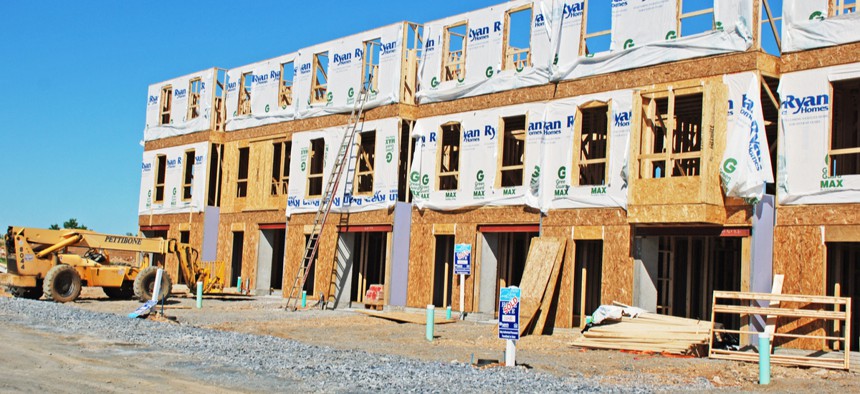Tax Reform Hurt Affordable Housing. This Bill Could Bring Some Back.

Shutterstock

Connecting state and local government leaders
“We all know that current federal funding comes nowhere close to meeting the demand,” said Eve O’Toole, Holland and Knight local government group co-leader. “And we’re seeing those costs shifted to local government.”
WASHINGTON — Advocates of expanding affordable housing see hope in a Senate bill introduced last March that could give them a win after federal tax reform changed a low-income housing tax credit that will significantly reduce new construction in cities.
While Republican-backed reforms didn’t wind up eliminating private activity bonds, which account for as much as 55 percent of all financing for low-income tax credit housing each year, they did implement chained consumer price indexing and lowered the corporate tax rate from 35 percent to 21 percent.
Affordable housing investment and production already took a hit when Donald Trump won the 2016 presidential election and tax reform became a top priority with Republicans in control of the White House and Congress, but those two changes represent 230,000 to 235,000 lost housing units.
“That’s a pretty decent wound to affordable housing,” said Peter Lawrence, Novogradac & Company LLP public policy director, speaking Monday at the National League of Cities conference in the nation’s capital. “Not as bad as it could’ve been with the loss of private activity bonds.”
Lawrence believes the bipartisan Affordable Housing Credit Improvement Act, cosponsored by Sens. Maria Cantwell, a Washington Democrat, and Orrin Hatch, a Utah Republican, has a “good chance” of passing and helping to mend that wound.
By renaming the low-income income housing credit the “affordable housing credit” and increasing state allocations 50 percent, 225,000 new housing units could be constructed. The bill also proposes income averaging to determine tenant eligibility and establishing a minimum 4 percent credit rate for certain projects—potentially increasing the amount of capital in properties 20 percent to 25 percent and the number of housing units by 131,000 over 10 years.
“There is not enough money coming out of D.C. to make things happen,” said Kansas City, Missouri Mayor Pro Tem Scott Wagner.
Kansas City has attempted to use municipal tools, like a sales tax exemption for developers building affordable units, to up its mixed-use inventory.
And NLC is partnering with law firm Holland and Knight on the Mayors and CEOs for U.S. Housing Investment campaign looking to reinforce the federal government’s role as an affordable housing partner.
“We all know that current federal funding comes nowhere close to meeting the demand,” said Eve O’Toole, Holland and Knight local government group co-leader. “And we’re seeing those costs shifted to local government.”
Speaking to NLC later that day, Housing and Urban Development Secretary Ben Carson said he was pleased Congress preserved the tax status of interest generated by PABs—key to funding hospitals, affordable housing and infrastructure. He also expressed excitement in the creation of opportunity zones in the tax legislation.
Opportunity zones allow investors with capital gains to defer taxes on them for nine years, if they invest in a low-income housing community in the country. After that, they continue to hold the asset and all gains are tax free.
U.S. investors currently hold $6 trillion in unrealized capital gains, Lawrence said, and tapping into 1 percent of that amount would mean an extra $600 billion to work with.
“That’s a serious chunk of change,” Lawrence said.
Community development entities will likely be the first players because they can pool capital from investors, who are being incentivized to have long-term investment in low-income communities.
Governors have until March 21 to designate opportunity zones, up to 25 percent of the economically distressed tracts in their state. They can request an extension, but barring that they’ll have to wait another decade to redesignate because there’s no appeals process.
“Affordable housing stands to be a major recipient of this capital,” Carson said. “I am looking forward to seeing these investments in conjunction with the White House infrastructure plan so our cities, roads and bridges can come back stronger than ever before.”
Dave Nyczepir is a News Editor at Government Executive’s Route Fifty and is based in Washington, D.C.

NEXT STORY: Axing State Corporate Taxes Is Good Policy





